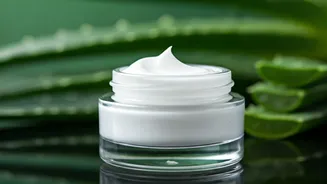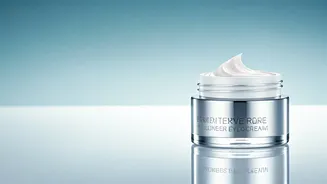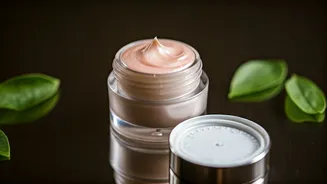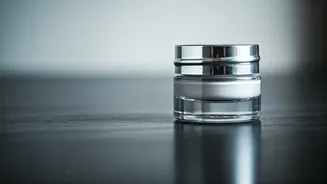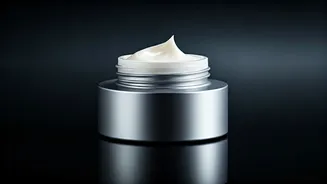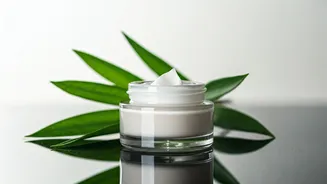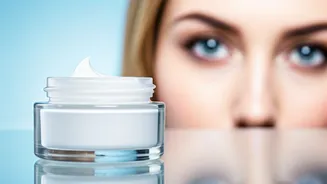Understanding Under-Eye Concerns
The skin beneath the eyes is notably thinner and more delicate than other facial areas, making it more vulnerable to issues like dark circles, puffiness,
and fine lines. Factors such as genetics, aging, lack of sleep, and lifestyle choices can exacerbate these concerns. Dark circles can appear due to increased melanin production, poor blood circulation, or the visibility of blood vessels through the thin skin. Puffiness may result from fluid retention, allergies, or sleep deprivation. Fine lines and wrinkles develop as collagen and elastin diminish with age. Addressing these concerns often involves skincare products designed to target these specific issues, providing hydration, brightening effects, and promoting overall skin health around the eyes.
Key Ingredients to Seek
When selecting an under-eye cream, the ingredients play a crucial role in its efficacy. Look for formulations that include beneficial elements like Vitamin C, which is a powerful antioxidant known for its brightening capabilities and its ability to protect the skin from environmental damage. Retinoids (Vitamin A derivatives) are effective in boosting collagen production, reducing fine lines, and improving skin texture, but should be used cautiously due to potential sensitivity. Hyaluronic acid is crucial for hydration, as it attracts and retains moisture, plumping up the skin and diminishing the appearance of fine lines. Peptides help stimulate collagen synthesis, contributing to firmer skin and reducing the appearance of wrinkles. Caffeine can help constrict blood vessels, minimizing the appearance of dark circles and puffiness. Finally, ingredients such as niacinamide can help reduce inflammation and improve skin tone.
Types of Under-Eye Creams
Under-eye creams are available in various formulations designed to address different concerns and skin types. Lightweight gels are often favored for their rapid absorption and are best suited for oily or combination skin. They offer hydration without being heavy. Richer creams, on the other hand, are ideal for dry skin as they provide intensive hydration, often containing emollients and occlusives to lock in moisture and create a protective barrier. Serums, with their concentrated formulas, penetrate deeply into the skin, delivering potent ingredients like peptides and antioxidants to target specific concerns such as wrinkles and dark circles. Some creams also incorporate specialized applicators, such as cooling metal tips or massage tools, which can enhance the absorption of ingredients and provide a soothing effect, further reducing puffiness and promoting circulation.
Application Techniques for Best Results
Proper application is critical to maximize the effectiveness of your under-eye cream. Begin by gently cleansing your face and patting it dry. Dispense a small amount of cream onto your fingertip; a pea-sized amount is usually sufficient for both eyes. Using your ring finger (as it applies the least pressure), gently dab the cream along the orbital bone, which is the bony area around your eyes. Avoid applying the cream too close to your waterline to prevent irritation. Lightly pat the cream into your skin using gentle upward motions until it is fully absorbed. This method helps to stimulate circulation and prevents pulling or tugging on the delicate skin. For optimal results, use your under-eye cream consistently, both morning and night, and always follow with sunscreen during the day to protect your skin from sun damage, which can worsen dark circles and fine lines.
Evaluating Your Results
The timeline for seeing results from under-eye creams varies depending on the product's ingredients, the severity of the skin concerns, and individual skin types. In general, it can take several weeks or even months of consistent use to notice significant changes. Initial benefits might include improved hydration and a slightly brighter appearance. With continued use, you can expect a gradual reduction in the appearance of fine lines, dark circles, and puffiness. Be patient and realistic in your expectations, as under-eye creams are designed to improve, not completely eliminate, skin issues. If you do not observe any improvements after extended use, it might be beneficial to experiment with other products containing different ingredients, or to consult a dermatologist for personalized advice and more advanced treatments, if needed.
